#reed painter
Text
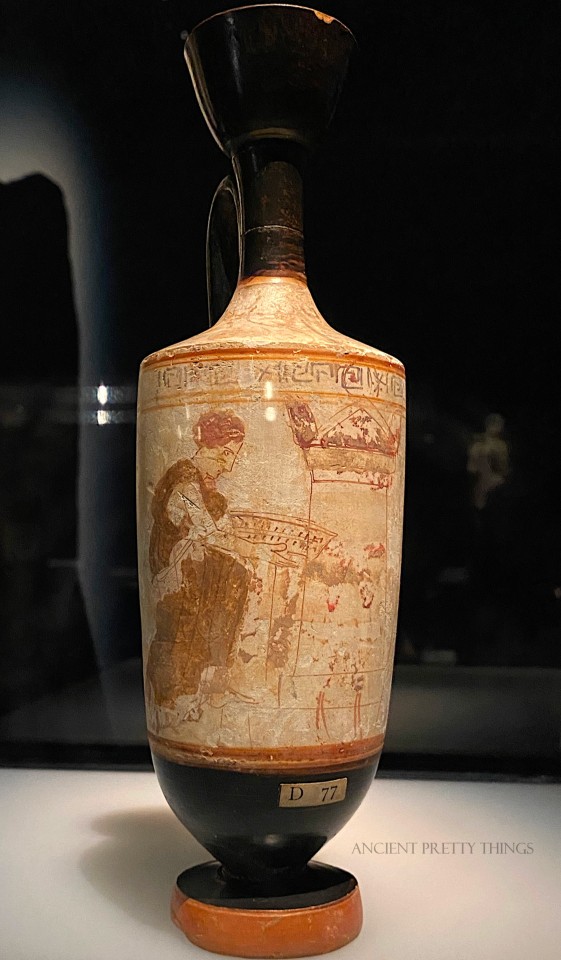

Lekythos featuring a woman pouring a funerary libation.
This was not an item for everyday use, as the scene is painted on after firing; it was always intended for funerary rites, as the scene suggests.
Athens, 420-400 BCE
Attributed to the Reed Painter.
#ancient greece#ancient greek#attic#reed painter#ancient art#ancient painting#funerary rites#original photography#ancientprettythings
76 notes
·
View notes
Text
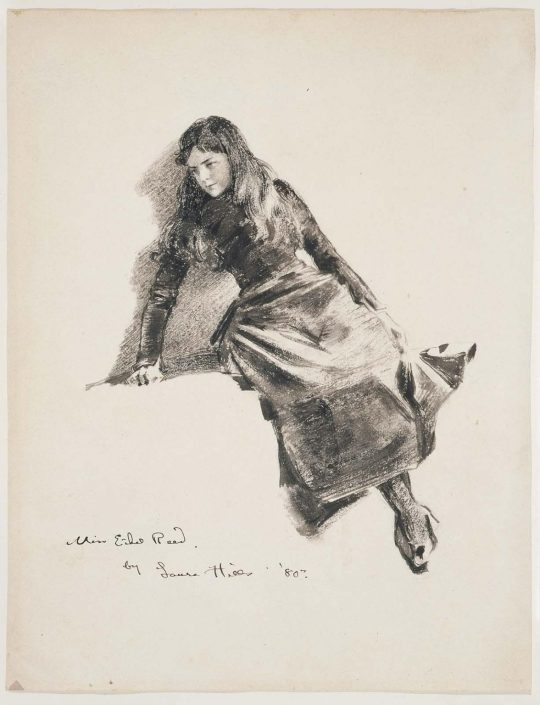
Laura Coombs Hill - Ethel Reed (1880)
182 notes
·
View notes
Text

John Cale, Naomi Levine, Andy Warhol, Ingrid Superstar and Lou Reed
Thank @nwonitro
📷 Larry Fink
#john cale#andy warhol#ingrid superstar#lou reed#music#art#movies#musician#musica#rock#rock music#singer#rock singer#actress#warhol superstar#the velvet underground#acid rock#experimental rock#nihilism#art rock#proto punk#noise rock#painter#artist#pop art#movie director#photographer#larry fink#|
18 notes
·
View notes
Text

Stanley Reed (British, 1908–1978) • Still Life with Fish • Victoria Gallery & Museum
#stanley reed#british painter#artist#painting#20th century art#still life#art#fine art#art of the still life blog#art lover#fish in artworks#art appreciation#british artist#artist UK#realism#oil painting
9 notes
·
View notes
Photo



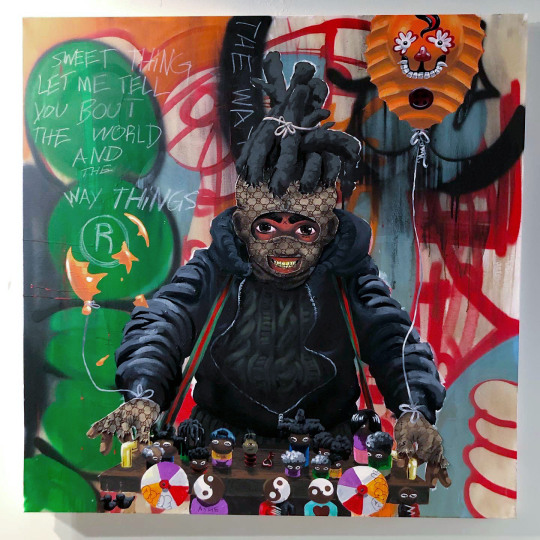
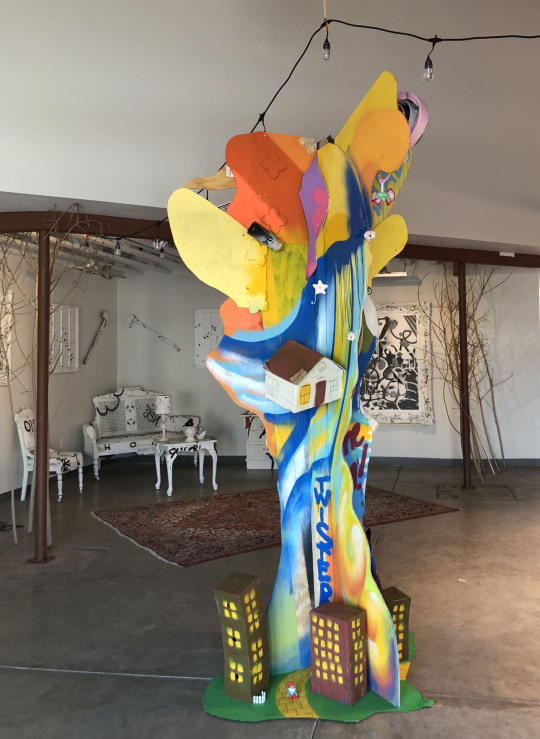


Currently at the Tully-Levine Gallery at the ArtsXchange ( part of The Warehouse Arts District Association) is The Wiz Reimagined a collaborative art exhibition by iBOMS (Jabari Reed- Diop) and Zulu Painter.
The imaginative paintings accompany sculptures and an installation which also at times includes video projections.
Tonight (1/25/23) there will be a screening of The Wiz, hosted by Hillary Van Dyke of Green Book Tampa Bay and an artist talk with both artists and Scott Terry of Mahogany Gallery.
#the wiz#iBOMS#zulu painter#jabari reed-diop#warehouse arts district association#warehouse arts district st pete#st pete art shows#art shows#mixed media#art installation#artsXchange#green book tampa bay#scott terry#mahogany gallery#art talks#painting#art
4 notes
·
View notes
Text





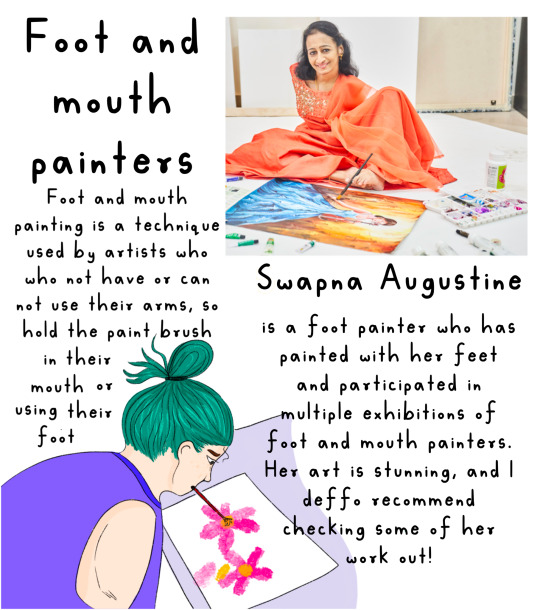


Art Hacks for Physical Disabilities!!
I know art can be inaccessible to physically disabled people for a lot of reasons, and I think art should be accessible to everyone, so here’s a couple of the things I found to help for a few different issues you may face that stop you participating!
I have a link to all these items (UK) in my link tree!!
IMAGE DESCRIPTION
Slide one: illustration of a white woman with pink hair, wearing a pink outfit, sitting in a power wheelchair, looking at the viewer with thumbs up. Text Reese “hacks to make art more accessible”
Slide two: illustration of three different kinds, using three different types of pencil grips. One hand uses a circular grip. 100 is a large, rectangular grip. Another uses a grip that is ergonomic and fit into the hand. Main text reads “Paul, grip, strength and dexterity”. Subtext reads “there are loads of different types of pencil, grips or design for different disabilities and conditions. Increasing the width of the pencil can give more texture for a better grip using a pencil with a thicker with also reduces the amounts of pressure needed to hold a pencil you can make your own using items like pool noodles. KT tape an air dry clay. You can also put these groups on things like paint brushes.“
Slide three: illustration of a hand using a tool that looks like a wrist support with a paintbrush connected to it text next to it reads “this talk next a paintbrush to your hand in a way that means you don’t need to hold the paintbrush with your fingers and you will need to move your arm around“ on the bottom right hand corner is in photograph of a guided hand device. Text read “regarded hand as a tool designed to reduce the need for moving your hands and fingers and relies on the movement of your shoulder and upper arms and can be used with different materials like paintbrushes, pencils, pens and styluses.
Slide four: main header reads “when in bed“. Illustration of an iPad pillow with a iPad in it is next to text that reads “iPad pillows, put your tablet at an easier to access level when sitting or lying down“. In the bottom left hand corner is an illustration of a girl sitting in bed in her pyjamas with a pillow behind her and a bed table as she is drawing. On the left hand side is a photograph of a bed table with the text reading “bed tables are used to give you a flat tire up surface while in bed, and are often height adjustable”. In the bottom right hand side is a bedsit, a pillow with the text underneath, reading “ bedsitters of specially shaped pillows that you put behind you in bed to help you set up and give you a soft surface to lean back on”.
Slide five: maisie had a read out “at a desk left”. On the left hand side is a photograph of the document holder with the text “document holders put your paper at an angle to help prevent crane in your neck down”. On the right hand, middle side is an illustration of someone using a armrest and on the bottom left hand side is a photograph of the armrest. Text next to them reads “economic arm rests clip onto your table or desk and give you a surface you lean you’re forearms or elbows on. This can be used to steady your arm and reduce pain and fatigue while sitting at a desk”.
Slide six: maisie reads “foot and mouth painters” . on the right hand side is an photograph of swapping Augustine, an Indian woman with no arms, wearing a sari painting with her left foot. In the bottom left hand corner is an illustration of a woman with green hair painting using her mouth. Text reads “foot and mouth painting is a technique used by artists who do not have, or cannot use their arms so hold the paintbrush in their mouth or using their foot. Swapna Augustine is a foot painter who has painted with her feet and participated in multiple exhibitions of foot and mouth painters. Her art is stunning and I would definitely recommend checking some of help work out.“
Slide seven: main text reeds “art without brushes and pens”. On the left-hand side is a photograph of a spin art device. Text next to read it reads “spin out involves using bottles of ink and squirting them onto a spinning piece of paper to create spiral art. On the middle right hand side is a illustration of a laptop with coding art written on the screen. Text me next to it reads “coding art involves making programs that design and create art pieces digitally. This could be used in conjunction with an eye tracking software.“ On the bottom left hand side is a photograph of a child in a power wheelchair with paint on their wheels painting onto a large piece of paper. Next to this is text reading “wheelchair painting involves putting paint on your wheelchair wheels and moving around and large piece of paper. Sometimes you can connect a roller to create more marks.“
Slide eight: text reads “what do you do to make art accessible for you?”
End of ID.
#art#original art#artist#oc art#original character#queer#disabled#disabled rights#disability#disability pride month#disabled artists#disability art#art hacks#accessible art#accessibility#foot and mouth painter#foot and mouth painting
1K notes
·
View notes
Text

A woman plays the aulos (a double-reeded wind instrument, often played at symposia and other festive occasions in the ancient Greek world). Attic red-figure lekythos (oil jar), attributed to the Brygos Painter; ca. 480 BCE. Now in the Metropolitan Museum of Art.
#classics#tagamemnon#Ancient Greece#art#art history#ancient art#Greek art#Ancient Greek art#vase painting#red-figure#lekythos#Brygos Painter#Metropolitan Museum of Art
258 notes
·
View notes
Text


Blendon Reed Campbell (American painter, 1872-1969)
656 notes
·
View notes
Text
I've seen it circulating that News Correspondent is the same character Alfred Singleton from Stoker's notes, and this is a bit of an exaggeration. The only mention of Alfred Singleton is on a single piece of paper labelled "Historiae Personae" (Rosenbach #1) and all that's written about him is "A Psychical Research Agent -- Alfred Singleton."
That being said, said piece of paper has some other great cut characters not in the finished Dracula that everyone should enjoy, including:
Jonathan Harker's sister (mentioned in another list--Rosenbach #35a--as being "shrewd and sceptical")
A detective named Cotford
Kate Reed, a "friend and former schoolfellow" of Mina's
A painter named Francis Aytown
Two mute servants (a man and a woman) in the service of the Count.
Rosenbach #1 also has listed a crossed out "An American Inventor from Texas" and "A Texan -- Brutus M. Marix" which many have taken to be proto-Quincey!
425 notes
·
View notes
Text
Dracula's lost characters
I realize that maybe it's the right time to say it...
In the drafts of Dracula, Bram Stoker gave to the correspondent from Withby a name, and he was an actual character in the story, he was Alfred Singleton and was a sort of foil to Abraham Van Helsing, but with some kind of psychic abilities, and that's the reason he was eliminated. There were more other characters, a painter named Francis Aytow that painted the big tempest that brought the Demeter to Whitby and subsequently met Dracula and went mad while trying to paint him, and a Detective named Cotford that would investigate later events thinking there was foul play in some of the deaths, and a modern woman named Kate Reed that was another journalist with Singleton.
( @eleutheryos do you follow Dracula daily, my old friend? )
#dracula daily#alfred singleton#francis aytow#kate reed#detective cotford#i roleplayed as Singleton and some friends played the others#long time ago#i miss that rpg so much
478 notes
·
View notes
Text


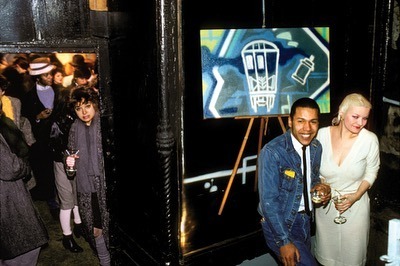

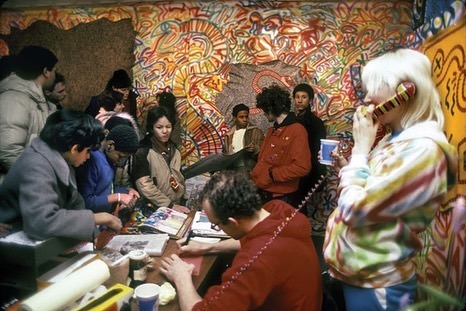
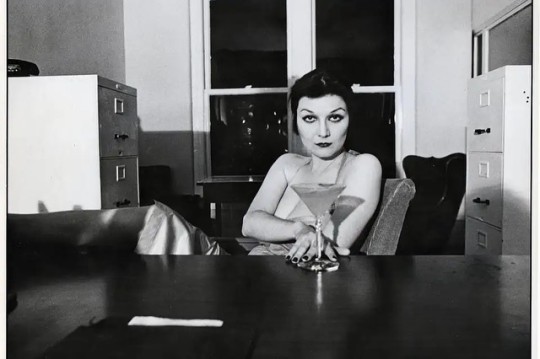
RIP PATTI ASTOR
“Patti Astor was queen of the downtown scene. She arrived in NYC in 1975 with stardom on her mind. In a short time, she was in demand in underground No Wave films and was one of the creative sparks that put the East Village on the cultural map. But Patti Astor was also sick of the "established" uptown art gallery scene, filled with "white walls, white wine, and white people." She knew many graffiti and hip-hop artists, and understood that like the punk artists playing downtown, the uptown rappers and painters used the city as a backbeat and canvas for their work. When Astor and partner Bill Stalling launched FUN Gallery in 1981, they moved #graffiti and hip-hop into a gallery space, bringing uptown sensibilities downtown. FUN Gallery's goal was to be a gallery for artists not buyers. It opened its doors to the people and kids who actually lived in the East Village. Patti Astor wanted art for everyone. FUN was the place artists could show without losing any of their street creds, and so the work of many of the cutting edge artists of the early 1980s--such as Jean Michel Basquiat, Keith Haring, #Dondi, #Futura2000, FAB 5 FREDDY, #LeeQuinones, Kenny Sharif, and Lady Pink--could be seen there. It also was known for its terrific parties. FUN Gallery was only around for four years, but in that short time, it was instrumental in opening up the art world to creativity wherever it's found.” (Source: Josephine Reed)
19 notes
·
View notes
Text

...for my Marvel and Bridgerton muses, because they are loud today
Marvel
The Vision: synthezoid; Avenger
Emma Frost: mutant telepath
X-23/Laura Kinney: clone/daughter of Wolverine
Kwannon/Pyslocke: ninja raised by the Hand
Jason Wyngrade: Mastermind; Brotherhood of Evil Mutants
Valeria Richards: genius daughter of Reed Richards and Sue Storm
Sonya Falsworth: MI6 agent; new acting director of MI6
muses with established AU:
Alec Trevelyan: Hydra double-agent at Shield
Penelope Garcia: mutant technomancer at the FBI
Dr. Spencer Reid: hidden mutant at the FBI
Bidgerton
Edwina Sharma: Diamond of the season
Benedict Bridgerton: second son of the Bridgerton family; painter
Eloise Bridgerton: daughter of the Bridgerton family
muses with established AU:
Macau Theerapanyakul: young rake; he and his mysterious family arrived in London at the beginning of the season;
Kim Theerapanyakul: musician; he and his mysterious family arrived in London at the beginning of the season, although it appears that he wants to distance himself from his family.
Like/Reply for a starter! Crossovers/AUs are welcome and our muses don't need to know each other.
#&& a new beginning (starter call)#(remember to reply who you want or be doomed!)#marvel rp#mcu rp#bridgerton rp#period rp#superpower rp
16 notes
·
View notes
Text
“As art historian Christopher Reed argues, ‘The Wilde trials seemed to reveal homosexuality as the secret behind the enigmatic passions of the Aesthetes, tainting the entire movement, all of its products, and even the idea of aesthetic sensitivity.’
Indeed, the modern identities of ‘the homosexual’ and ‘the artist’— both considered manifestations of innate predispositions—developed nearly simultaneously in the nineteenth century, as both creating art and committing sodomy moved from activities to ways of being. ‘Artistic’ quickly became euphemistic slang for ‘queer.’ Painter Paul Cadmus remembered how the association had transferred to the American scene by the 1930s. ‘They just said, ‘He’s an artist.’’ American psychiatrists, too described men suspected of homosexuality as ‘aesthetic in temperament.’ Thus when [Bob] Mizer [influential founder of the homoerotic Physique Pictorial magazine] adopted this language, praising [artist George] Quaintance for his ‘neo-aestheticism’ and imagining his audience as ‘the limited aesthetic group,’ he was signaling to and helping construct a distinct gay identity among his readers.”
David K. Johnson, Buying Gay: How Physique Entrepeneurs Sparked a Movement
11 notes
·
View notes
Text
Dollar Bin #24: The Doors

Like every other wishing-he-were-cool Southern California white boy born in the mid-to-late 70's, I had a big Doors phase in 1990. In the year leading up to Oliver Stone's ridiculously silly, TV flinging, film I spent 10 rich months in the following fashion:
First, I copied a friend's father's double CD Door's Greatest Hits collection (the one with Jim Morrison's fabulous pecks on the cover). I was discovering music after comic books and I memorized every glorious moment.
Next, I tracked down the band's four easily accessible full albums via another friend's Costco (or was it still called Price Club at that point?) Nice Price 4 Pack and memorized all of that too, even though I found parts of Waiting For The Sun dull and much of LA Woman sorta gross.
Then, I decided that Not To Touch The Earth was actually their best song and that anyone who only knew the band's greatest hits was a poser.
Next, I enjoyed listening to my father's tall tales about how The Doors had once lived on the strand in Manhattan Beach (my hometown) and were often practicing in their garage when my dad passed by. He also claimed that Morrison had worked for him for one single day as a house painter (my father's trade) but that Jim had been too nuts to keep on the payroll. At other points in my dad's joyful imagination Charles Manson and Ginger Baker had also been on past crews; his lies, which were specifically designed to entertain us, led us to mock and roll our eyes at him when he sincerely claimed that one of his past painters, Robbie Rodgers, actually had gone on to be a relatively successful musician. But then dad scored us tickets and we went to see the dude's Reggae/slasher band, War Called Peace, open for Yellowman; it was totally nuts, and Robbie told us that my dad had changed his life.
After that, I learned of the existence of The Soft Parade and swore to myself that I'd never listen to it. My heroes, horrifyingly, had once SOLD OUT!
Next, I watched Apocalypse Now over and over, daydreaming of the day I'd get my own hands on The End's master tapes and undercover even more of Morrison's Oedipal ranting.
(All the while I had no idea what Oedipal actually meant.)
Throughout it all, I feverishly followed Robert Hilburn's updates in the LA Times on the back and forth on set about whether or not Val Kilmore would sing or lip sync in the upcoming film.
Shortly thereafter, I shook my fist in fury when Billy Idol dared to cover LA Woman. The poser!
That drove me to the library, where I got Riders on the Storm, Jim Densmore's Morrison bio. I read it feverishly, taking mental notes on how I too would one day successfully avoid the draft by demonstrating Morrison-level savvy madness.
Midway through Densmore's self-aggrandizing tome, I bought a copy of Wilderness, Morrison's slim and posthumous published poetry collection, and carried it around with me together with my copy of the Tao Te Ching, convinced that they were the two true holy books. Anyone who thought otherwise I recognized as a poser.
All the while, I spent a lot of time thinking about how Ray Manzarek doubled as the band's bass player and pianist all at the same time on one keyboard. I viewed him as Einstein with a chainsaw.
Somewhere along the way, I sought out an ancient tape copy of a disco sounding album the band made after Jim's death and noted that no one in the band had made meaningful music ever since. And so I grew slightly concerned that maybe my heroes were secretly lame.
But I still stood in line for opening night of the film and smugly mocked everyone else in line with me as a poser. Clearly, none of them knew the secret lyric, edited out, after She Gets! on Break on Through...
And I thought the movie was pretty cool!
Then I proceeded to grow sick of the whole thing - the band and everything about them was suddenly far too mainstream for my superior tastes - and I decided anyone who liked The Doors on any level was a poser. Lou Reed and Bob Dylan were all that mattered.
Then a cool older kid played me Peace Frog and I realized I'd missed a whole album (damn Costco!). So I decided The Doors were cool again for about 15 minutes.
Then, 10 months after the whole thing had started, I moved on for good.
But that's not entirely true. Years and year later, I sang my kids to sleep with The Spy and The Crystal Ship; and I can still can almost recite Morrison's poem about some dude burning leaves. Now that I summon it from the internet and read it again I still think it's pretty great:
A man rakes leaves into
a heap in his yard, a pile,
& leans on his rake &
burns them utterly.
The fragrance fills the forest
children pause & heed the
smell, which will become
nostalgia in several years
But now, I have to ask, how does one even go about listening to The Doors with any objectivity 33 years after they became the world's biggest band for a moment and 50 years after Morrison's death? I mean there's a 15 year old hipster in the high school where I teach who still wears a t-shirt with Morrison on it. I don't know if objectivity can be achieved.
But I'm giving it a shot right now as I write this.
My copy of their debut, self-titled, album is an original print supposedly, and the vinyl sure sounds like it's creeping up on its 60th birthday. Crackling thunder, seemingly borrowed from Riders on the Storm, buzzels and pops throughout. But the whole record sounds great that way, like it too was taken from the Ancient Gallery and WALKED ON DOWN THE HALL!
Fair reader, here's what I think: if I try hard and strip back all the nonsense I know about poor Jim and the band, then I'm left with what is elemental music.
Sure there's some silly stuff to be found: Morrison's lyric "specialize in having fun" from Take It As It Comes is, and always has been, embarrassing, along with basically all the lyrics to Light My Fire. And I don't really know that the organ's drunk circus vibe in Alabama Song holds up.
But listen to Manzarek spill every coin in the band's copious wallet on Take It As It Comes; remember just how cool the wandering guitar intro still is on The End, not to mention the slapping, rippling, pick me up 3/4 of the way through that wandering track; appreciate just how unhinged Morrison's screaming holler is on Back Door Man; ride on the perfect Crystal Ship. And for god's sake, just sit back and listen to Light My Fire.
youtube
What if we simply thought of The Doors alongside their actual peers from 66-71: Love, Buffalo Springfield, Jefferson Airplane, The Grateful Dead? What if we slowed down and remembered that the band did everything they did in under 5 years? What if we remembered, at the same time, just how much Stephen Stills still sucks? And what if we set aside for good just how damn magnetic poor Jim was? What if we just listened to The Doors?
I encourage you to give it a shot. Drop the needle on The Doors debut once a season; ride the King's Highway west; catch all the weird scenes in the goldmine. You too will wish The Doors practiced in a garage down your street.
-------------
Update! After posting this, my famous brother sent me this photo of Morrison. He's actually in Manhattan Beach!

I think my father, who, come to think of it, looked a hell of a lot like Morrison at that point, is just outside the frame, striding away after firing his ass. Rest in peace Jim.
12 notes
·
View notes
Text
Highlights from my copy of Dracula's section on notes Stoker made before/during various drafts:
"There followed the incident with the girls who try to kiss him not on the lips but on the throat, culminating in the Count saying, 'This man belongs to me I want him.'" — More homoerotic in the early notes apparently. Also, the "To-night is mine" line got walked back in England to an emphatic repetition that tomorrow, tomorrow is theirs, but Bram stuck the latter line back in for the American publication. No 'I want him' in any finished version though.
The whole first section was originally much heavier on law stuff, and featured the man who later became Peter Hawkins, as opposed to Jonathan. Even after it changed to him, it was legal documents and actual letters home until lizard fashion day, which was the first mention of a diary.
Stoker divided the book into four acts like a play at one point
Lucy was originally engaged to Seward
Mina was originally Jonathan's sister in an early cast list, then became his fiancee
Quincey's name was originally Brutus Morris
Dracula's name was originally Count Wampyr
Mina had a close friend/confidante named Kate Reed
Van Helsing was divided into three different characters: a detective named Cotford, a psychical research agent named Alfred Singleton, and a German professor named Max Windshoeffel.
The Count had two servants in London, a silent man and dumb woman. There was also a painter character at some point.
Basically a lot of cast changes...
Quincey originally was slated to go off to Transylvania midway through the book and apparently get killed by a werewolf.
There was a scene where Jonathan visited Mina at her school before he left to travel to Castle Dracula.
Also, the list of Dracula characteristics at one point is pretty interesting. Definitely curious about a few of these:
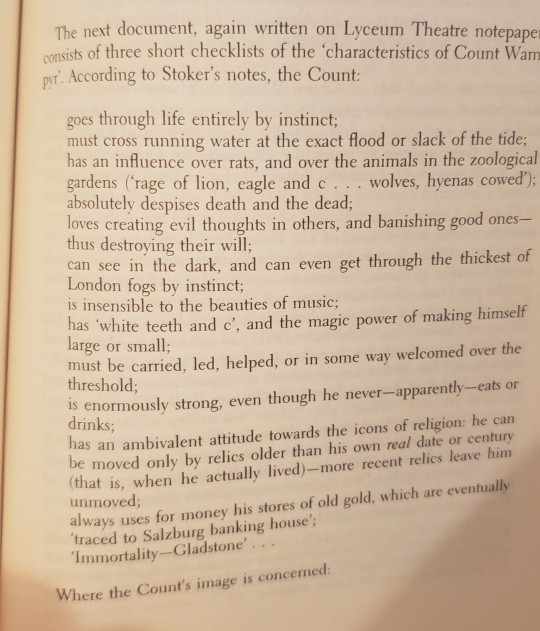

108 notes
·
View notes
Text

A satyr plays the double reed instrument known as an aulos to entertain Dionysus, who is crowned with ivy and holds his characteristic thyrsus (staff topped with a pinecone). Interior of an Attic red-figure kylix (drinking cup) by the potter Hieron and the painter Makron; 480s BCE. Found at Vulci, Italy; now in the Altes Museum, Berlin. Photo credit: ArchaiOptix/Wikimedia Commons.
#classics#tagamemnon#Ancient Greece#Classical Greece#Greek religion#Ancient Greek religion#Hellenic polytheism#Dionysus#Dionysos#Bacchus#satyr#satyrs#art#art history#ancient art#Greek art#Ancient Greek art#Classical Greek art#kylix#vase painting#red-figure#Altes Museum
271 notes
·
View notes